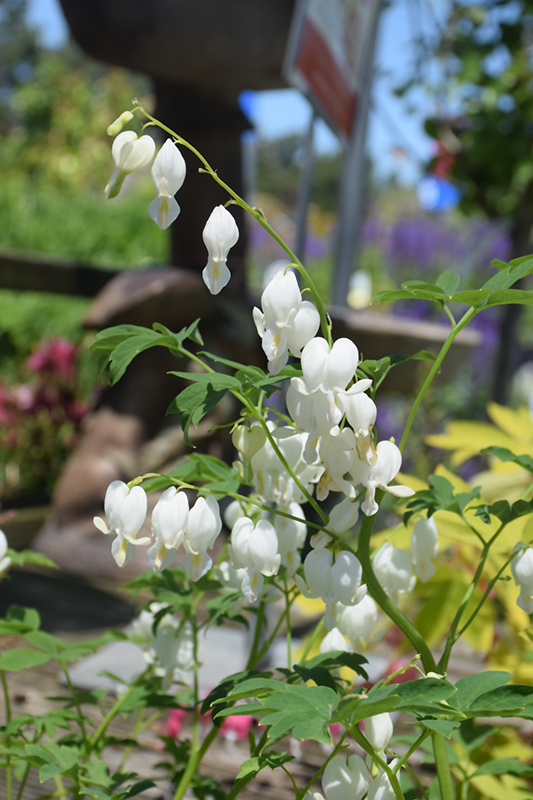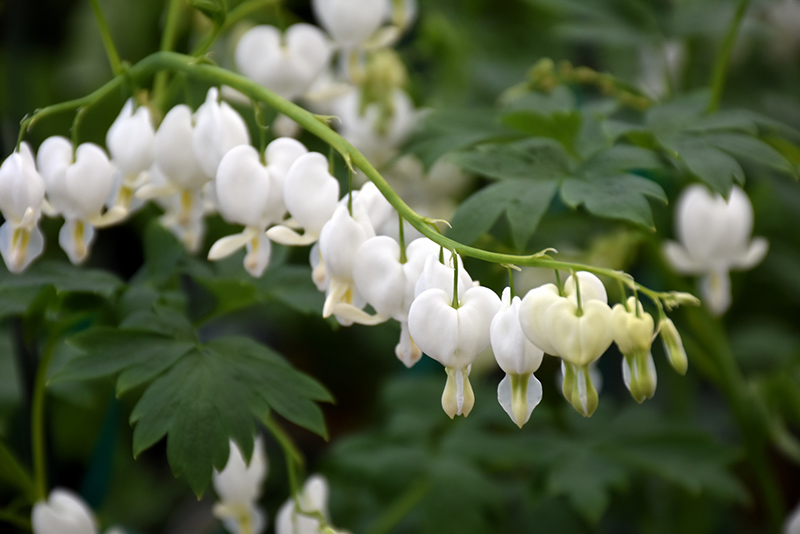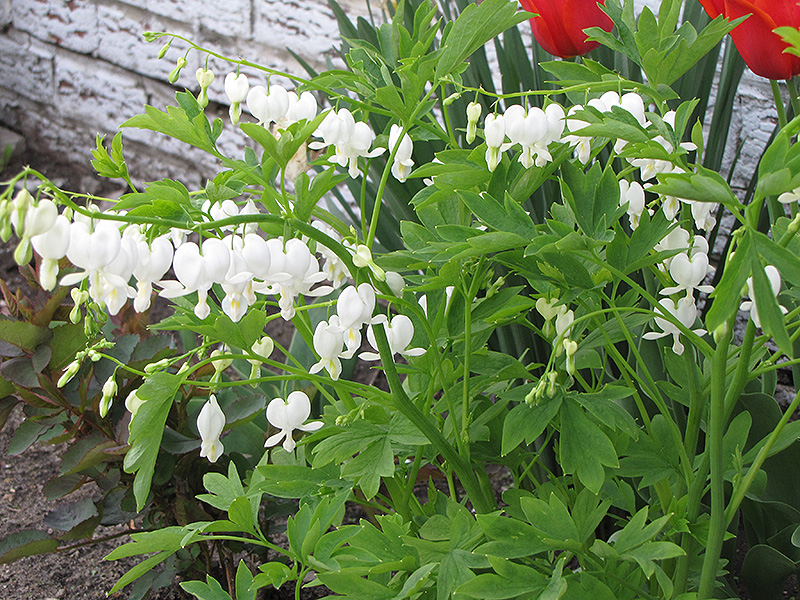Alba Bleeding Heart
Dicentra spectabilis 'Alba'
Height: 24 inches
Spread: 18 inches
Sunlight:
![]()
Hardiness Zone: 1b
Ornamental Features
Alba Bleeding Heart features delicate nodding white heart-shaped flowers dangling from the stems from late spring to early summer. Its ferny compound leaves remain light green in color throughout the season.
Landscape Attributes
Alba Bleeding Heart is an herbaceous perennial with a mounded form. Its relatively fine texture sets it apart from other garden plants with less refined foliage.
This plant will require occasional maintenance and upkeep, and should be cut back in late fall in preparation for winter. It is a good choice for attracting butterflies to your yard, but is not particularly attractive to deer who tend to leave it alone in favor of tastier treats. It has no significant negative characteristics.
Alba Bleeding Heart is recommended for the following landscape applications;
- Mass Planting
- General Garden Use
Planting & Growing
Alba Bleeding Heart will grow to be about 24 inches tall at maturity, with a spread of 18 inches. It grows at a medium rate, and under ideal conditions can be expected to live for approximately 15 years. As an herbaceous perennial, this plant will usually die back to the crown each winter, and will regrow from the base each spring. Be careful not to disturb the crown in late winter when it may not be readily seen! As this plant tends to go dormant in summer, it is best interplanted with late-season bloomers to hide the dying foliage.
This plant should be grown in a location with partial shade or which is shaded from the hot afternoon sun. It prefers to grow in average to moist conditions, and shouldn't be allowed to dry out. It is not particular as to soil pH, but grows best in rich soils. It is somewhat tolerant of urban pollution. Consider applying a thick mulch around the root zone over the growing season to conserve soil moisture. This is a selected variety of a species not originally from North America. It can be propagated by division; however, as a cultivated variety, be aware that it may be subject to certain restrictions or prohibitions on propagation.
Sizes Available:
#1 CONT $13.49



